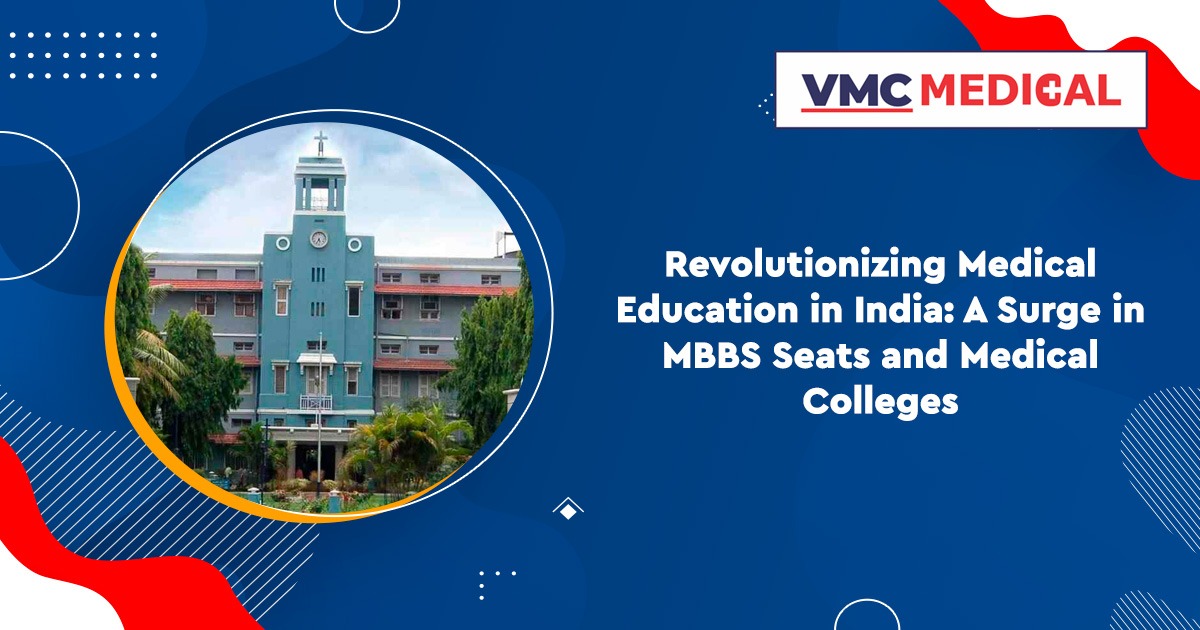Revolutionizing Medical Education in India: A Surge in MBBS Seats and Medical Colleges
 Posted On
Posted On
521 total views, 4 views today
In a sweeping move aimed at transforming the landscape of medical education in India, the government has embarked on an ambitious journey of expanding the number of medical colleges, resulting in a significant increase in MBBS seats across the nation. This strategic endeavor has witnessed a remarkable growth of 82% in the number of medical colleges, soaring from 387 in 2014 to an impressive tally of 704 today.
With an unwavering commitment to enhance medical education accessibility, the government has orchestrated a staggering 110% surge in MBBS seats, propelling the count from a modest 51,348 in 2014 to an astounding 1,07,948 at present. This expansionary wave doesn’t stop at the undergraduate level; postgraduate seats have witnessed a commendable elevation of 117%, surging from 31,185 in 2014 to a robust 67,802 today.

A fundamental cornerstone of this transformative movement lies in the strategic emphasis on underserved regions and aspirational districts. To breathe life into this vision, the Ministry of Health & Family Welfare has implemented a trailblazing Centrally Sponsored Scheme (CSS) titled “Establishment of New Medical Colleges Attached with Existing District/Referral Hospitals.” This initiative stands as a beacon of hope for regions devoid of public or private medical colleges, radiating equitable educational opportunities.
A key facet of this scheme involves a collaborative fund-sharing model between the Central and State Governments. This symbiotic financial partnership operates at a ratio of 90:10 for the North Eastern and Special Category States, while others partake at a ratio of 60:40. This strategic allocation of resources underscores the government’s commitment to fostering educational growth across regions, irrespective of their developmental status.
The saga of this ambitious endeavor unfolds across three transformative phases. A monumental 157 Government medical colleges have received the resounding endorsement of this visionary scheme. Over the span of the past five years, a commendable tally of 101 medical colleges have been granted the coveted approval, paving the way for a new era of medical education.
As the canvas of medical education expands, the landscape witnesses the rise of 22 All India Institutes of Medical Sciences (AIIMS). These eminent institutions stand as testament to the government’s dedication to nurturing exceptional medical talent. A monumental achievement in itself, 19 out of these 22 AIIMS have already commenced their undergraduate classes, marking a pivotal milestone in India’s medical education odyssey.
However, this expansionary surge comes accompanied by challenges, most notably the scarcity of qualified teaching faculty. Addressing this critical concern, a proactive strategy has been implemented. The esteemed Diplomate of National Board (DNB) qualifications have been embraced as a qualifying criterion for teaching faculty appointments. This pragmatic approach not only enriches the talent pool but also mitigates the pressing issue of faculty shortages.
In the grand tapestry of this educational revolution, the emphasis on accessibility, equity, and quality stands out as the defining hallmark. The expansion of medical colleges and the proliferation of MBBS seats signify not only a quantitative leap but a qualitative transformation of medical education. As the nation’s healthcare demands continue to evolve, this holistic approach is poised to nurture a new generation of medical professionals who are adept, compassionate, and deeply attuned to the needs of diverse communities.
Final Thoughts
In conclusion, the trajectory of medical education in India has undergone a paradigm shift, fueled by a surge in medical colleges and MBBS seats. This evolution is not confined to numbers alone; it embodies a commitment to inclusivity, regional development, and academic excellence. The government’s visionary schemes and strategic partnerships have set the stage for a future where healthcare is democratized, and medical education is a beacon of progress. As new vistas of knowledge open up and aspirational districts embrace the transformative power of education, India’s journey towards a healthier, more empowered tomorrow gains momentum.




